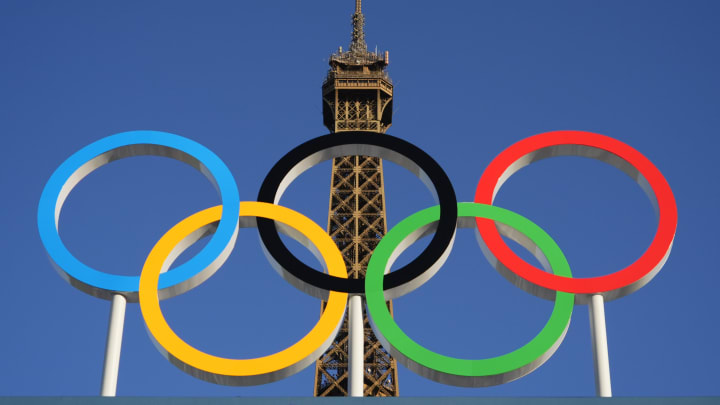The U.S. Center for SafeSport Needs Public Funding and Independence from the USOPC

PARIS — With every gold medal she wins and every room she lights up, Simone Biles reminds us there is nobody like her.
Also, there are thousands like her.
Biles is a gymnast without peer and a survivor with too many. In 2018, she revealed publicly that she was one of the hundreds of athletes sexually abused by USA Gymnastics team doctor Larry Nassar. She wrote at the time that “there are many reasons that I have been reluctant to share my story, but now I know it is not my fault.”
The courage of Nassar’s survivors sent him to prison for life. It also spurred the creation of the U.S. Center for SafeSport, in 2017.
In its first nine months, SafeSport received 281 reports of misconduct.
This year, it is on track to receive around 9,000.
There are two ways to interpret that number. One is that the extent of misconduct is astounding. The other is that victims and survivors are getting more comfortable coming forward.
“Nobody could have guessed that the number of reports that we got would be where it is today, or that the need would be there,” SafeSport CEO Ju’Riese Colón told me last week, as we discussed the organization in Paris.
SafeSport has come under considerable scrutiny this year, with accusations of failed processes and questions about whether it should even continue to exist. Attorney Jon Little, who represented a badminton player who accused her coach of sexual assault, told The Associated Press: “The bottom line is, you should never call SafeSport; you should call the police. Then, if the police say it’s OK, you should call SafeSport.”
Scrutiny is productive, and there is no doubt that SafeSport can improve. The organization has already made changes. Most notably, it merged the response-and-resolution department and the legal team to improve communication and, Colón says, “make sure that what we’re investigating is investigable before we get too far down the road.”
SafeSport was formed for good reasons, which are as relevant today as ever. National governing bodies did a poor job investigating misconduct, especially when it involved powerful figures. Sadistic coaching tactics that were common for decades are now considered unacceptable. Athletes needed a place to turn.
Advising people to “never call SafeSport … call the police” is simplistic and misguided. First of all, SafeSport doesn’t discourage anybody from calling the police. Second, for many athletes, calling the police is more terrifying than calling a sports organization that was created specifically to protect them. The prospect of testifying in court against an authority figure can be more daunting than speaking to SafeSport investigators—and calling SafeSport is daunting enough. As Colón says, “Nobody calls because they're having a good time. There's already a level of nervousness.”
Also, many behaviors are unprofessional and inappropriate in sports but not criminal.
If a coach profanely berates a group of 12-year-olds on a daily basis, calling them fat and stupid and an embarrassment to their families, what are the police to do? Arrest the coach for being a jerk? Sexual harassment is illegal, but much of the other abhorrent behavior in sports is not against the law. Unlike the police, SafeSport has the authority to investigate emotional abuse as well as physical abuse.
“It's egregious,” Colón says of emotional abuse. “We're not talking about someone just calling you a name, and then walking away. Usually, this is a pattern of abuse over time, with multiple claimants and victims. There are some coaches who shouldn't be coaching, right. And their style of coaching is just no longer tolerated.”
There is also this uncomfortable reality: The system will never be perfect. With thousands of reports each year, even the best investigators and most efficient mechanism for evaluating allegations won’t snare every miscreant. News flash: The justice system is not perfect either. SafeSport is an added layer of security—a second net, in addition to the justice system, to catch offenders.
There are now 2,168 people in SafeSport’s misconduct database. Fourteen of those have been added since the Paris Olympic cauldron was lit. Two are permitted to continue working, but with temporary restrictions. Ten are under temporary suspensions that could become permanent. Two are permanently ineligible after allegations of sexual misconduct.
I’m sure there are cases that are not handled as well as they should be, and for anyone who has been abused, this is heartbreaking and unforgivable. Again: Scrutiny is good. But a world with SafeSport is still better than a world without it.
SafeSport operates primarily on $20 million in annual funding it receives from the USOPC. Naturally, this has led to suspicions that SafeSport is beholden to the USOPC. But the USOPC cannot withhold SafeSport’s funding for whatever reason—the dollar figure is mandated by Congress.
Colón says the organization oversees between 11 million and 14 million athletes. Stars like Biles have empowered less famous athletes to speak out.
“Elite athletes were standing up,” Colón says, “saying, ‘No, no, no, we're not gonna take this. I'm prioritizing my mental health. I'm not going to deal with you calling me names or sexualizing me.’ ”
The Olympics also lead to more reports. Says Colón, “Whenever it’s a Games year, we know there’s going to be an increase, because there's just so much focus around athletes. Especially now, because athletes are just so vocal.”
An organization with a $20 million budget and 130 employees is not equipped to handle 9,000 reports per year. SafeSport redirects a lot of those cases to national governing bodies, but $20 million is still not enough. A more functional Congress would also recognize that funding SafeSport through the USOPC is problematic—the perception that SafeSport is just an arm of the USOPC encourages no one to come forward to report a coach or any other authority figure. A proposal in Congress would rewrite the law governing the Olympics and call on public funding for SafeSport, not route it from the USOPC.
“It’s great that people are calling us,” says Colón. “I want more people to trust the system and call us when they even suspect any sort of abuse. But with the amount of cases that we were seeing, it is difficult for us to keep up. Our budget is flat, but our need is growing.”
Any successful organization needs to evolve, and independent oversight is a component of that. SafeSport should have a bigger budget and oversight—and we should have high but realistic expectations. SafeSport will never be perfect, but we owe it to our athletes to equip the organization with the tools to make sports safe.
